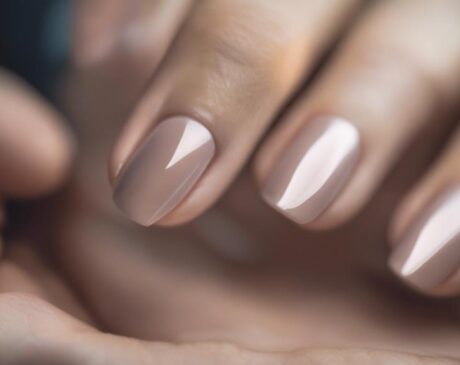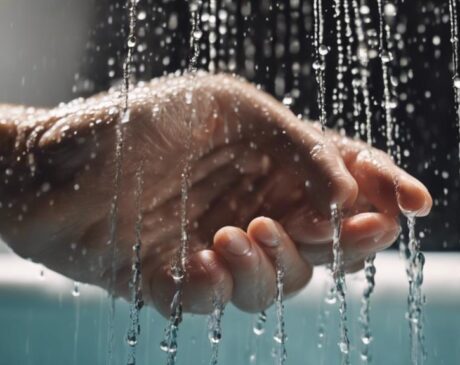Are Nail Drills Damaging?
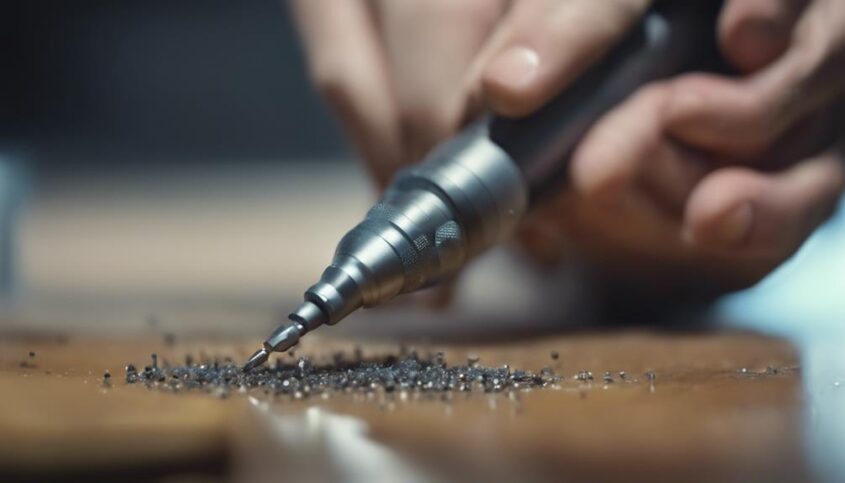
Nail drills have the potential to damage nails if used improperly, causing thinning and uneven surfaces. Over-filing can weaken nails and lead to infections. Proper training and quality drill bits can reduce these risks. Understanding the impact of nail drills on nail structure is crucial for maintaining healthy nails. Nail drill speeds vary for different purposes, and mastering the correct technique is important to avoid damage. Implementing safety measures like using protective equipment and proper training is vital. Remember, awareness of these risks is key to achieving optimal nail care results.
Key Takeaways
- Nail drills can cause damage like thinning and uneven surfaces.
- Incorrect operation may lead to burns or cuts.
- Over-filing can weaken nails and cause infections.
- Proper training and quality drill bits can reduce damage.
- Understanding nail drill speeds and techniques is crucial.
Potential Risks of Nail Drills
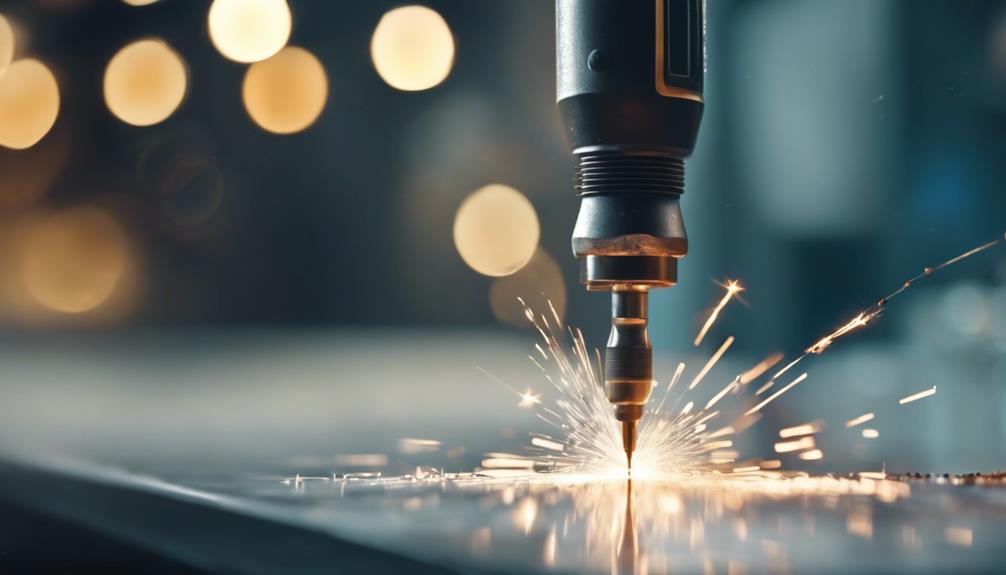
Nail drills pose potential risks to the health and integrity of the nails if not used properly. When operated incorrectly, nail drills can cause damage such as thinning of the nail plate, uneven surfaces, and even burns or cuts around the nail bed. However, with advancements in technology, innovative nail drills now come equipped with adjustable speed settings, ergonomic designs, and various attachments that minimize these risks.
One common risk of nail drills is over-filing, which can lead to weakened nails and potential infections. To address this, nail technicians should undergo proper training on the safe use of nail drills and be aware of the appropriate pressure to apply. Additionally, the use of high-quality drill bits made from materials like ceramic or carbide can reduce the likelihood of damage to the nails.
Innovations in nail drill technology have made it possible to achieve desired nail shapes efficiently while prioritizing the health and safety of the nails. By understanding these potential risks and utilizing the latest advancements in nail drill technology, individuals can maintain beautiful nails without compromising their health.
Impact on Nail Structure
Improper use of nail drills can have a significant impact on the structural integrity of the nails, potentially leading to issues such as thinning, unevenness, and susceptibility to damage. This can result from excessive filing, incorrect angles, or too much pressure applied during the drilling process. Understanding how nail drills affect the nail structure is crucial for maintaining healthy and beautiful nails. Here are three key ways nail drills can impact the nail structure:
- Thinning: Overuse of nail drills can cause the nails to become thin and weak, making them more prone to breakage and damage.
- Unevenness: Improper drilling techniques can create uneven surfaces on the nails, leading to an unprofessional and unpolished look.
- Susceptibility to Damage: Nails that have been excessively drilled may lose their natural strength, making them vulnerable to external damage and infections.
Understanding Nail Drill Speeds
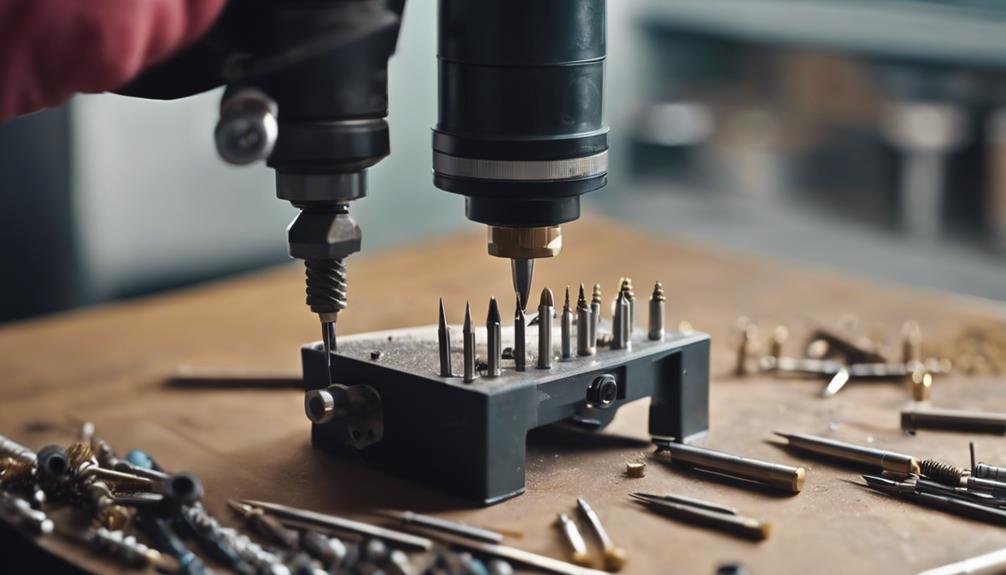
When operating a nail drill, it is essential to have a comprehensive understanding of the different speeds available to ensure optimal results and minimize the risk of damage. Nail drills typically offer a range of speeds, usually measured in rotations per minute (RPM), to cater to various nail care needs. Lower speeds, usually ranging from 0 to 10,000 RPM, are ideal for tasks like shaping and buffing, providing precision and control. Medium speeds, around 10,000 to 15,000 RPM, are suitable for removing product buildup or old enhancements. Higher speeds, ranging from 15,000 to 30,000 RPM, are best reserved for tasks like filing acrylic nails or handling thick enhancements.
Importance of Proper Technique
Mastering the correct technique is paramount when utilizing a nail drill to ensure precision and safety in nail care procedures. Proper technique not only enhances the efficiency of the nail drill but also minimizes the risk of damage to the nails and surrounding skin. Here are three key reasons why mastering the proper technique is essential:
- Precision: A skilled technique allows for precise shaping and filing of nails, resulting in a professional and polished finish that is difficult to achieve with manual tools alone.
- Safety: By using the correct technique, the risk of accidents such as cuts, burns, or over-filing is significantly reduced, promoting a safe and comfortable experience for both the technician and the client.
- Efficiency: Employing the right technique ensures that the nail drill operates at its optimal performance level, saving time and effort while producing high-quality results that meet the expectations of clients seeking innovative nail care solutions.
Nail Drill Safety Measures
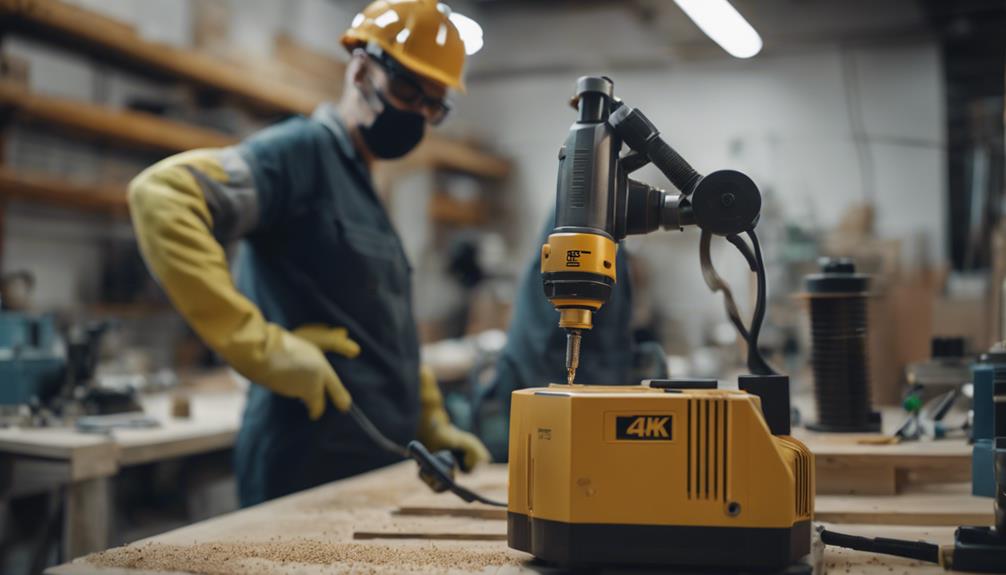
To ensure the safe and effective use of a nail drill, implementing proper safety measures is imperative in professional nail care procedures. Nail drill safety measures not only protect the client from potential harm but also safeguard the technician from accidents. Below are essential safety measures to be followed when using a nail drill:
| Safety Measure | Description |
|---|---|
| Use of Personal Protective Equipment | Ensure the technician and client wear appropriate protective gear like gloves and masks to prevent inhalation of dust and chemicals. |
| Regular Equipment Maintenance | Conduct routine checks on the nail drill to ensure it is functioning correctly and replace any worn-out parts promptly. |
| Proper Training | Technicians should undergo proper training on nail drill usage to understand the correct techniques and safety precautions. |
| Client Consultation | Before using a nail drill, consult with the client about any existing medical conditions or allergies that may affect the procedure. |
Alternatives to Nail Drills
When considering alternatives to nail drills, it is essential to explore gentler nail care methods such as manual filing techniques and natural nail buffers. These options can help maintain nail health without the potential risks associated with nail drills. By incorporating these gentle approaches into your nail care routine, you can achieve well-maintained nails while minimizing the possibility of damage.
Gentle Nail Care
For those seeking a more delicate approach to nail care, exploring alternatives to nail drills can promote healthier and stronger nails. Embracing innovative methods can revolutionize your nail care routine. Here are three gentle nail care alternatives to consider:
- Electric Buffer Tools: These tools gently smooth the nail surface without the need for aggressive drilling.
- Glass Nail Files: Known for their durability and gentleness, glass nail files help shape nails without causing damage.
- Moisturizing Treatments: Using nourishing oils and creams can strengthen nails from within, promoting natural growth and resilience.
Manual Filing Techniques
Manual filing techniques provide a gentle and precise alternative to nail drills for shaping and maintaining healthy nails. By utilizing manual tools such as nail files, buffers, and shaping sticks, individuals can achieve the desired nail shape without the potential risks associated with nail drills. The following table showcases some common manual filing tools and their purposes:
| Tool | Purpose |
|---|---|
| Nail File | Shapes and smooths the nail surface |
| Buffer | Polishes and shines the nail surface |
| Shaping Stick | Helps to refine nail shape |
| Cuticle Pusher | Pushes back and tidies cuticles |
These tools offer a safer and more controlled method for nail care, promoting precision and finesse in nail shaping.
Natural Nail Buffers
Natural nail buffers serve as effective alternatives to nail drills in achieving a smooth and polished nail surface. When considering natural nail buffers as an option, keep in mind the following benefits:
- Gentle on nails: Natural nail buffers provide a gentle way to smooth out ridges and imperfections without causing damage.
- Promotes natural shine: These buffers enhance the natural shine of the nails, giving them a healthy and glossy appearance.
- Easy to use: Using a natural nail buffer is a simple process that can be done at home, offering convenience and accessibility for nail care enthusiasts.
Frequently Asked Questions
Can Nail Drills Be Used on Natural Nails or Are They Only for Artificial Nails?
Nail drills can be used on natural nails with caution. Understand proper techniques, choose suitable drill bits, and work at low speeds. Consult a professional for guidance. Prioritize nail health to maintain natural beauty.
Are There Any Specific Conditions or Disorders That Would Make Someone More Susceptible to Damage From Using a Nail Drill?
Individuals with conditions like thin or brittle nails, nail fungus, or sensory issues may be more susceptible to damage from nail drills. It is crucial to consult a professional to assess the risk and determine safe nail care practices.
How Often Should Nail Drills Be Used to Minimize the Risk of Damage?
To minimize the risk of damage, nail drills should be used sparingly. Experts recommend limiting usage to once every 2-3 weeks, allowing nails time to recover and preventing overexposure to potential harm associated with frequent drill use.
Are There Any Specific Products or Tools That Can Help Protect the Nails During Nail Drill Use?
To enhance nail protection during drill use, consider utilizing specialized nail drill bits designed for gentle filing, protective coatings like rubber guards, and ergonomic handpieces for better control. These innovative tools can help safeguard nails during procedures.
Are There Any Long-Term Effects on Nail Health From Regularly Using a Nail Drill?
Regular use of nail drills can lead to weakened nail structure, thinning, and potential damage to the nail bed. It is essential to prioritize nail health by balancing drill use with proper care and maintenance routines.


